Papers by Rodrigo Hernández-Ramírez

She Ji: The Journal of Design, Economics, and Innovation, 2024
This article examines the transformation of design work under the influence of managerialism and ... more This article examines the transformation of design work under the influence of managerialism and the rise of Generative Artificial Intelligence (GenAI). Drawing on John Maynard Keynes's projections of technological unemployment and the evolving nature of work, it argues that despite advancements in automation, work has not diminished but rather devalued. Design, understood as a type of knowledge work, faces an apparent existential crisis. GenAI grows adept at mimicking the output of creative processes. The article explores how the fear of the end of design work fueled by the rise of GenAI is rooted in a misunderstanding of design work. This misunderstanding is driven by managerialism— an ideology that prioritizes efficiency and quantifiable outcomes over the intrinsic value of work. Managerialism seeks to instrumentalize and automate design, turning it into a controllable procedure to generate quantifiable creative outputs. The article argues why design work cannot be turned into a procedure and automated using GenAI. Advocates of these systems claim they enhance productivity and open new opportunities. However, evidence so far shows that flawed GenAI models produce disappointing outcomes while operating at a significant environmental cost. The article concludes by arguing for a robust theory of design—one that acknowledges the unique ontological and epistemic boundaries of design work and underscores why design cannot be reduced to a procedural output.
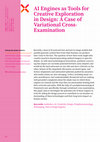
Proceedings of the 11th Conference on Computation, Communication, Aesthetics & X, 2023
Recently, a host of AI-powered text and text-to-image models that quickly generate content that r... more Recently, a host of AI-powered text and text-to-image models that quickly generate content that rivals what humans can produce have come to the fore. The question of how these tools might alter creative practices beyond generating stylised imagery is open for debate. As with most technological innovations, positions concerning this impact are currently polarised between early adopters and would-be die-hard advocates on one side and stern criticism on the other. Echoes of the singularity discussion are heard again, and techno-utopianism and unfounded optimism pushed by sensationalist media claims are also emerging. Critics, including many creative practitioners, feel understandably threatened and are making well-grounded complaints about the shady ways in which these engines are trained and the ways they are presumably stealing both their artworks and styles. With the help of a postphenomenological framework and, specifically, through variational cross-examination, this paper aims to investigate the potential role of these engines as tools for aiding the design process to contribute to our broader understanding of these technologies and their long-term impact on human society.
Springer series in design and innovation, Oct 27, 2022
Springer series in design and innovation, Oct 27, 2022
Springer series in design and innovation, Oct 27, 2022
Springer series in design and innovation, Sep 19, 2022
ECADE Official Conference Proceedings

Computer-generated aesthetic artefacts and the technology employed to create them have brought se... more Computer-generated aesthetic artefacts and the technology employed to create them have brought serious challenges for art scholarship. How should they be understood, described and categorised in relation to non-computational artworks, and how current technological developments are affecting aesthetic practices and our understanding of art in the Information Age are two of the most pressing questions in this field. To address them, this dissertation proposes a scientifically-informed conceptual inquiry and historical account of the relation between computational technology and art. The analysis here presented is based on insights provided by contemporary philosophy of technology and philosophy of information. These styles of analysis give access to a broader understanding of information and communication technologies (and computational technology in particular) that mitigates some of the epistemic shortcomings of media studies and critical theory. This dissertation shows computers are the ultimate modelling machines; tools that allow us design, represent, interact with, and objectify entities and experiences that need not exist in concrete (Modern or “Newtonian”) reality, but merely as . It shows computational aesthetic objects may be better described as simulations: as dynamic, persistent, technically mediated renderings of a source system at different levels of abstraction (granularities). But also that they may also be regarded and analysed as complex informational systems: as patterns, programs, or interfaces which, upon being interpreted, not merely convey but generate new factual information. Ultimately, this dissertation shows that regarding computational technology and computational aesthetic objects as systems illuminates their complexities and shows why monolithic and overarching characterisations of either of them are unlikely to provide valuable knowledge in the long run. While only explicit on certain sections, the underlying argument advanced by this dissertation is that art scholars should care to develop a more robust computational literacy, as well as to question certain (Romantic) prejudices concerning the relationship between art, science, and technology.
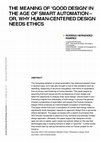
The increasing adoption of smart automation has improved people's lives in several ways, but ... more The increasing adoption of smart automation has improved people's lives in several ways, but it has also brought a host of new problems such as deskilling, deepening of structural inequalities, new forms of exploitation, loss of privacy and hindering of human liberties. This paper begins by assuming that such issues are the consequence of poor design and takes the opportunity to analyse what "good design" should mean in turn. Following insights from mediation theory and philosophy of technology, it surveys the general inherent complexities of automation and argues that Human-Centered Design (HCD) continues to endorse an instrumentalist conception of technology. This paper shows that such a conception of human–technology relations significantly limits designers capacity to approach design from a genuinely ethical standpoint. The paper concludes with a sketch of principles that HCD should incorporate to become a truly humanist and ethically-minded design approach.

Springer Series in Design and Innovation, 2020
This paper presents a self-ethnographic experience for defining a new system to manage customer r... more This paper presents a self-ethnographic experience for defining a new system to manage customer relationship in a department of internal sales. The paper focuses on the definition of strategies for deciding the future of new a CRM (Customer Relationship Manager) that will replace an older version used for many years by a tourism company. We followed an approach based on the Probe Methodology (PM), considering a context in which the user of the platform could participate, alongside the company, in the development of the CRM software. Our results showed that the PM could help to identify the main characteristics, modes of use and problems related to the specific environment of the software. Furthermore, it was possible to identify the ways in which users adapted to overcome issues that emerged while interacting with the system, and brought valuable insights into the development of the CRM. Based on techniques typically associated with the social sciences, the project collects information about intangible concepts to transfer them to a software development project. The PM proved efficient in identifying relationships that are not visible at first sight and to perceive requirements and needs not directly expressed.

Springer Series in Design and Innovation, 2021
This chapter proposes a preliminary structure for an undergraduate course in Design based on a pr... more This chapter proposes a preliminary structure for an undergraduate course in Design based on a pragmatic understanding of the learning process. Starting from a systematic literature review and based on first-hand experience as teachers, we argue that pragmatism, like phenomenology, strongly influences design education. Following this insight, we contend that Design may be regarded as a normative discipline and thus propose a macrostructure that contemplates (1) tradition and foundations; (2) practice and research; and (3) business and transdisciplinarity. Our proposal focuses on a flexible academic trajectory that understands creativity as a novel idea development process that connects existing knowledge and solves problems through making. Everyone involved with teaching and learning design will find in this chapter references of interest since the changing nature of the requirements for design education forces us to think and re-make our field from a plural standpoint.
Dark patterns are highly unethical tools used in digital design to obtain, inter alia, as much pe... more Dark patterns are highly unethical tools used in digital design to obtain, inter alia, as much personal data as possible from users; normally, without their consent. However, the methods followed by dark patterns can be re-purposed to actually enhance users’ privacy, thus turning them into ethical tools. This ongoing research aims to show how dark patterns can be re-designed to steer users into choosing the strictest privacy settings. From the point of view of ethical design practices, this implies a substantial transformation of something inherently bad into a public interest enabler.

EDULEARN21 Proceedings, 2021
Interdisciplinarity has for a while been recognised as a valuable feature in education, as it pre... more Interdisciplinarity has for a while been recognised as a valuable feature in education, as it prepares students for dealing with increasing levels of complexity. Moreover, integrating knowledge from diverse areas and sources to form new ideas or artefacts is regarded as a core aspect of creativity. Consequently, it is clear that students in scientific and technological areas require not only “soft skills” but a deeper understanding of the humanities. Likewise, students from areas traditionally associated with the arts and humanities, such as design, need practical knowledge of science and technology. In the European context, the Bologna Process has privileged interdisciplinary learning. However, there remains a tug of war between the need for specialisation in certain areas and implementing satisficing interdisciplinary initiatives. These obstacles are worsened by bureaucratic procedures and organisational difficulties specific to each country and university. Starting in 2017, at our institution, a “pedagogical practices” initiative was launched to involve students in interdisciplinary projects spanning our faculty’s four areas: design, technology, communication, and marketing. The initiative met with many obstacles from the outset, including frequent changes in the coordination team, lack of enthusiasm and participation from teachers, and operational hassles. However, one of the most ambitious projects—the CROSS spring semester—managed to grow and consolidate despite difficulties, becoming the most extensive interdisciplinary “synergy” at our university. The CROSS is a semester-long collaboration between two English-taught BA programmes: Games and Apps Development (GAD) and Global Design (GD). GD follows a holistic, integrative approach to design practices, focusing on visual experiences, interactions, services, and strategic designerly knowledge. GAD follows a more technical-centred approach than similar courses in its domain of knowledge, focusing on programming instead of mixing artistic practices and coding. Both programmes are entirely based on Problem-Based Learning and have a similar structure: a nuclear “project” curricular unit supported by five subject-specific curricular units. The CROSS spring semester has turned into the de facto model for our pedagogical practices. In this paper, we describe our experience planning, implementing, and managing the CROSS spring semester, from the first, almost failed iterations to the current implementation, where students are finally participating in a functional multidisciplinary endeavour. We will describe the operational difficulties involved in coordinating a dozen teachers with different areas of expertise and 80 students from different cultural backgrounds. We will show how our approach involves students in “co-operative multidisciplinarity” actively working together towards a complex common goal—in this case, the conceptualisation and development of a videogame. We will discuss how in that process, they acquire the intended skills from their respective areas, design and programming, and practice soft skills and project management skills. We will then show how the CROSS model has proven its resiliency during the ongoing pandemic. Finally, we will summarise how the CROSS has served as a model for the rest of our synergies. We expect this account to spark discussions about the difficulties and benefits of bridging education in design, technology, and communication.
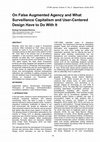
Journal of Science and Technology of the Arts, 2019
In the last years, there has been a surge in AI-powered products. Often marketed as "free&qu... more In the last years, there has been a surge in AI-powered products. Often marketed as "free", these services operate as hooks to lure unsuspecting users into voluntarily giving up data about every aspect of their life. Their data is the primary fuel of surveillance capitalism, a new economic system that exclusively benefits so-called Big Tech organisations at the expense of personal privacy and freedom of choice. This paper argues the ways these AI-powered products are being imagined and designed is further generalising a kind of, "enframing" that encourages a bureaucratic relationship with the world disguised as (a false sense of) augmented agency. This paper shows that technologically informed philosophical reflections can contribute to getting ourselves back into the feedback loop of technological mediation by helping us recognise our "becoming" with technologies as a design process.
Journal of Science and Technology of the Arts, 2017
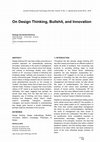
Journal of Science and Technology of the Arts, 2018
Design thinking (DT) has been widely promoted as a powerful approach for systematically achieving... more Design thinking (DT) has been widely promoted as a powerful approach for systematically achieving innovation, particularly in the world of management. Recently, however, some critical voices from design and science & technology studies have called bullshit on DT, accusing it instead of distorting and trivialising design methods and processes to serve purely commercial goals. Through an analysis of the recent history of design research and an overview of some (philosophical) accounts on the concept of "bullshit", this paper shows that at least some of the criticism holds. However, it argues that a truly fruitful critique of DT needs to go beyond simple derision. Ultimately, this paper suggests that perhaps we should steer away from the idea that there is a designerly way of thinking, and focus instead on showing how designers, being "doers", create maker's knowledge. Designers, educators, managers, and anyone interested in understanding why design goes beyond a simple methodology perhaps might be interested in this account.
Journal of Science and Technology of the Arts, 2016
El giro digital ha significado una profunda transformación en la formas en que hacemos Fotografía... more El giro digital ha significado una profunda transformación en la formas en que hacemos Fotografía y en las maneras en que la concebimos. Por un lado, el volumen de producción e intercambio de imágenes fotográficas ha alcanzado dimensiones antes impensables. Por otro, se elevan voces que alertan sobre la inminente defunción de la Fotografía a consecuencia de la amenaza que su transfiguración digital conlleva para la noción de indexicalidad y de especificidad del medio. A fin de comprender los alcances e implicaciones de éstas problemáticas, a lo largo de las próximas páginas se llevará a cabo un recorrido crítico aunque sintético por el panorama conceptual que rodea y sustenta la noción de la Fotografía como medio específico con el fin de sentar las bases para una futura crítica que se adecue a las complejas circunstancias contemporáneas.

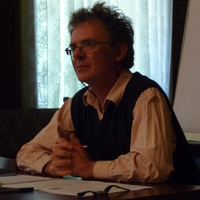









Uploads
Papers by Rodrigo Hernández-Ramírez